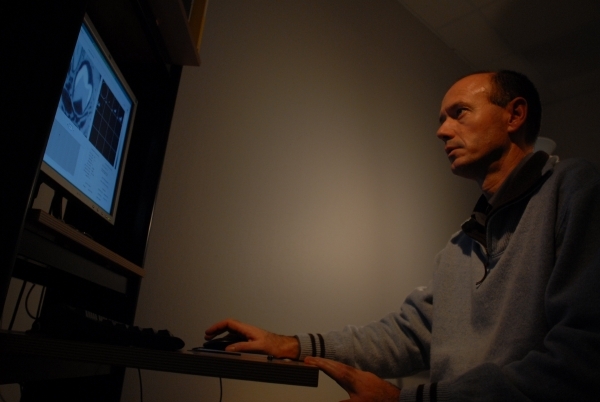13 March 2007
Hence the value of studying it to distinguish descendants with a common genetic heritage among a set of very ancient fossils, the aim being to establish the relative positions of each of the different branches of hominids in the human family tree—crucial information to perhaps one day unravel the mystery of our origins.
The 2 species put through the ExtremeCT scanner. The 1st, Australopithecus africanus, is over 2,300,000 years old. The 2nd, representative of the 1st humans, is less than 2,300,000 years old. Crédits : José Barga.
Non-destructive analysis
Until now, the only way to study the dentin/enamel interface was to actually cut through teeth, but this method was obviously destructive. Now, using the XtremeCT scanner developed to monitor bone demineralization in space, it can be done without damaging fossils—vital when only one such fossil exists.
Skulls reconstituted in 3D : Crédits José Braga
XtremeCT : Crédits CNES/MEDES
XtremeCT - space technology of the future
The XtremeCT scanner was developed with funding from CNES, ESA and the European Union for a European project to study bone quality.

Capable of deciphering clues from our distant past and preventing an illness that today affects half of women over the age of 60, XtremeCT is set to become a most useful tool for life sciences.

 Dossier de presse - Etude des fossiles humains (pdf - 830.62 KB)
Dossier de presse - Etude des fossiles humains (pdf - 830.62 KB)